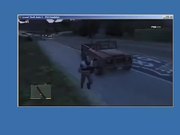McCracken: Impact of social media on culture
The impact of social media on culture has been extraordinary. I think it's really encouraged people to define themselves... to define the self very differently and to define the group very differently. The metaphor I use here is maybe not a perfect metaphor, but I think selves are cloudier, more multiple, you have more connections with more people, you have a more diverse sense of self, and now these platforms for exploring aspects of the self and connecting with people like you. And then the social group is now extraordinarily different.
I mean, I grew up in a world in which social connections began to atrophy almost immediately upon your introduction to someone. Unless you kept in touch the connection atrophied. And if you left it too long, you would have to get to know them all over again. You'd have to go through the rituals of introduction and you'd have closed the distance, and that just doesn't... If you're fifteen, you will never lose a friend. They'll end up as part of your cloud. You may not be in active contact with them, but you can get back in touch with them instantaneously and they can make themselves enormously useful to you when you do get in touch. So that's changed. The fundamental dynamics of selfhood, both instrumental and expressive, have been changed by the social media. Not just the dynamics of selfhood, but the dynamics of the social group. So that's clear.
I would hope that these technologies... I think we're just beginning to glimpse... To be more professional about culture, I think we need better metrics, and I'm hoping social media will supply some of those metrics, so that we'll be able to... You know, if you just take something simple like a word cloud, where you get words from a blog in their size proportional to the number of times the word is used in the blog, that's a wonderfully accessible visual way to represent the content of a blog. You just need to look at it to get a sense of who this person is and where they are. So that's a wonderful instrument for keeping track of... I love the idea of dynamic word clouds where you can see key terms to the extent that they're genuinely picking something up, and that's really the art of the deal. Creating instruments that are really detecting things happening in culture as opposed to something epiphenomenal. But if you can do that, this is really a great opportunity to see things changing in real time. And that's my hope, that eventually we'll have big boards hooked up to streams of real-time data, that allow us to see changes happen in real time. Because we're kind of getting there. As it is now, we can hope to go out there and get a snapshot of the culture, but we now know things are changing so quickly that that snapshot is out of date within 48 hours or a couple of weeks.
So at some point, we're going to need real-time feeds, and they're going to have to be data-based and so... My favourite example here is a project done by a couple of guys at MIT, I'm not going to think of their names off-hand. As an experiment they put cameras in the trees of Cambridge. The purpose of the camera was to register only the colour of the clothing worn by people who walked by the camera. So all of Cambridge, from the Harvard side to the MIT side, cameras were watching that community. And so they can show you colours rippling through the community as they become fashionable and they show in the stores. The nice thing about Cambridge is that it's not a very big community, but there's a huge difference between the student body at Harvard and at MIT. You can see colours rippling through Harvard and then just stopping at that part of the community and never making it to MIT. You can see MIT being relatively unsystematic in its colour choices, because it's just not very fashion-driven. So that's an example of real-time data, and nobody really cares about how kids in Cambridge dress, but you can imagine putting cameras of this kind in a neighbourhood in Paris filled with fashionistas or the next generation of fashion adopters. And for Roitfeld, the editor of the Paris Vogue, to sit at her computer and watch this neighbourhood as she launches the fall Vogue, and she knows when it's hit the stands and she'll watch these colours get into the system and then onto the street and then ripple through some neighbourhoods and not other neighbourhoods. Fantastically interesting. So I'm hoping the social media and other uses of digitally-based technology will give us better data.



















